Danish citizenship is considered one of the most attractive in Europe. It grants access to EU citizenship with all associated rights and privileges. Unlike temporary or permanent residence permits (residence or permanent residence status), citizenship provides a lifelong legal status that is almost impossible to lose if the law is respected. A Danish passport allows its holder to live and work freely not only in Denmark but also in any EU member state without additional permits. In addition, citizens can participate in the country’s political life — for example, by voting or holding elected office — while residence permit holders do not have such rights. For many immigrants from around the world — entrepreneurs, students, families, and qualified professionals — obtaining Danish citizenship is the logical culmination of their immigration journey, providing maximum protection and freedom of movement.
In this article, we will explain in detail how to obtain Danish citizenship in 2026: who is eligible, what methods and requirements exist, how long the process takes, and what it costs. You will learn about the advantages of a Danish passport, types of naturalization (including fast-track options), required documents, processing times, the possibility of dual citizenship, and common mistakes. The goal is to help potential applicants understand the process and plan their steps effectively.
Advantages of Danish Citizenship
A Danish passport offers its holder numerous tangible benefits:
- Freedom of movement and residence.
Danish citizens can travel visa-free to over 170 countries worldwide, including all EU states, the United Kingdom, the United States, Canada, Australia, and many others. In most cases, no visa is required, or an electronic travel authorization is sufficient. They also have the right to live and work permanently in any EU country without needing a residence permit — an opportunity that greatly expands career and business prospects across Europe. - Education and healthcare.
Citizens of Denmark enjoy free education at public universities, while non-citizens pay around €5,000 per semester. The Danish passport also grants access to higher education across the EU on preferential terms. Denmark’s healthcare system is among the best in the world: citizens receive free medical care under the national insurance system, and emergency assistance is available anywhere in the EU. Medical and social services are fully funded by the state and accessible to all Danish citizens. - High standard of living and social protection.
Denmark is renowned for its strong economy and high quality of life. Citizens receive full access to social benefits, including unemployment allowances, family payments, generous pensions, and disability support. The average monthly salary in Denmark (€5,500–€6,500) is one of the highest in Europe, and a Danish passport facilitates employment in well-paid positions. While knowledge of Danish is often necessary for most jobs, citizens enjoy freedom of professional choice without the bureaucratic obstacles faced by foreigners. - Political rights and security.
By obtaining Danish citizenship, you become a full participant in public life. You can vote in elections and referendums, run for parliament or local councils, and rely on government protection both at home and abroad. As an EU citizen, you are entitled to consular assistance worldwide and can receive help in emergencies. Denmark is one of the safest countries, with very low crime rates, and its passport ranks among the most respected globally. - Citizenship for children.
Danish citizenship is passed down by descent: children born to at least one Danish parent automatically become Danish citizens. This ensures your descendants also receive EU citizenship. Even if a child is born outside Denmark, they are still recognized as Danish (if the mother, father, or legal co-mother holds Danish citizenship). This provides your family with long-term stability and freedom of choice. - No residency requirement.
Danish authorities do not require citizens to reside permanently in Denmark. Once you have a passport, you are free to live, study, or work abroad indefinitely without losing your citizenship. Unlike permanent residence holders, citizens cannot lose their status through prolonged absence — a key advantage for those pursuing international careers or frequent travel. - Property and financial opportunities.
Only citizens (or EU nationals with equal rights) can buy real estate in Denmark without restrictions. Foreigners face strict rules — for example, purchasing property requires special permission from the Ministry of Justice, which can be difficult to obtain. A Danish passport removes these limitations. Citizens can also open bank accounts across the EU, invest freely, take loans on favorable terms, and run businesses throughout Europe. Citizenship provides a strong legal standing in the eyes of financial institutions.
In summary, Danish citizenship grants access to Europe’s best opportunities, comprehensive social protection, and unparalleled freedom of movement. It’s no surprise that more and more immigrants aspire to obtain this highly valued passport.
If you are planning to relocate or would like to obtain Danish citizenship in 2026, leave a request for a consultation — our lawyers will help assess your chances, verify your eligibility, and prepare the documents correctly. This will save you time and increase the likelihood of successfully obtaining citizenship on the first attempt.
Who Can Apply for Danish Citizenship
Danish law clearly defines who is eligible to become a citizen. The Danish Nationality Act sets out the legal grounds and categories of applicants entitled to citizenship. Below are the main groups:
- Children born to Danish citizens.
Every child whose mother, father, or co-mother (in same-sex families) is a Danish citizen automatically acquires citizenship by descent (jus sanguinis). This applies regardless of whether the child is born in Denmark or abroad (for births after July 1, 2014, there are no restrictions). For children born before 2014 or in special cases (for example, out of wedlock to a Danish father and a foreign mother), additional steps may be required to confirm citizenship. If the parents marry later, the child can acquire Danish citizenship before turning 18. Adopted children are also eligible — more details below. - Children born in Denmark.
Birth on Danish territory alone does not grant citizenship (Denmark does not follow the jus soli principle). The only exception is when the child would otherwise be stateless or if their parentage is unknown — for instance, foundlings with unidentified parents. Children born to foreign parents may later obtain citizenship through residence or naturalization along with their parents. - Adopted children.
A child under 12 adopted by a Danish citizen (or a Danish couple) automatically receives Danish citizenship, provided the adoption is legally recognized by Danish authorities. Once completed, the adopted child gains full legal status equal to a biological child, including a certificate of nationality and all related rights. - Foreign nationals through naturalization.
Most adult applicants fall into this category — immigrants without Danish ancestry who have legally lived in Denmark for several years and integrated into society. To apply, one must hold permanent residence and meet various legal conditions (discussed in detail later). The standard requirement is 9 years of continuous legal residence, though shorter terms apply to certain groups (for example, refugees, spouses of citizens, or Nordic nationals). - Spouses of Danish citizens.
Marriage does not automatically grant citizenship but can shorten the path. A foreign spouse of a Danish citizen may apply after 6–8 years of residence, depending on the duration of the marriage. If the marriage has lasted 3 years, 6 years of residence is enough; if less than a year, 8 years are required. The couple must have lived together in Denmark the entire period, maintaining a shared household. Authorities also check for adequate living space — at least 20 m² per person in the household. Suspected marriages of convenience lead to rejection and possible deportation. Genuine couples, however, can successfully naturalize once the residence requirement is met. - Investors and economic immigrants.
Unlike some countries, Denmark has no “citizenship by investment” program — it is impossible to buy Danish citizenship. However, investors can immigrate via business or startup visas. For example, entrepreneurs who open a business in Denmark may receive a residence permit for 2 years, renewable, and after 9 years of residence they can apply for citizenship through the standard naturalization route. Any advertisement offering to “buy Danish citizenship in 2025” is a scam. - Exceptional cases: merit, sports, or national interest.
Citizenship may be granted by special parliamentary act to individuals with extraordinary achievements or contributions to Denmark — such as world-class athletes, scientists, or cultural figures. Such cases are rare and require high-level approval. Military service in the Danish army does not automatically lead to citizenship, although foreign residents who serve may later apply through the regular process. - Restoration of former Danish citizenship.
This category applies to people who once held Danish citizenship but lost it — for instance, by voluntarily acquiring another nationality before 2015, when Denmark still prohibited dual citizenship. These individuals can now restore their citizenship through a simplified procedure. Options include: By declaration, if the person was born and raised in Denmark and has lived there again for at least the past 2 years; By transitional rule, available until June 30, 2026, for those who lost citizenship before September 1, 2015, and have no criminal record; Through standard naturalization, if other options don’t apply. Restoration is generally easier than initial naturalization, as the applicant is reclaiming a prior status. However, descendants of former Danes who were never citizens themselves must apply via the regular route.
In summary, a wide range of people can qualify for Danish citizenship — from children of Danes to long-term residents, spouses, refugees, and certain special cases. The key is to have a legitimate legal basis such as descent, marriage, or residence. Simply wanting “a second passport” is not sufficient.
Next, we’ll look in detail at the main legal pathways to obtain Danish citizenship and the specific requirements for each.
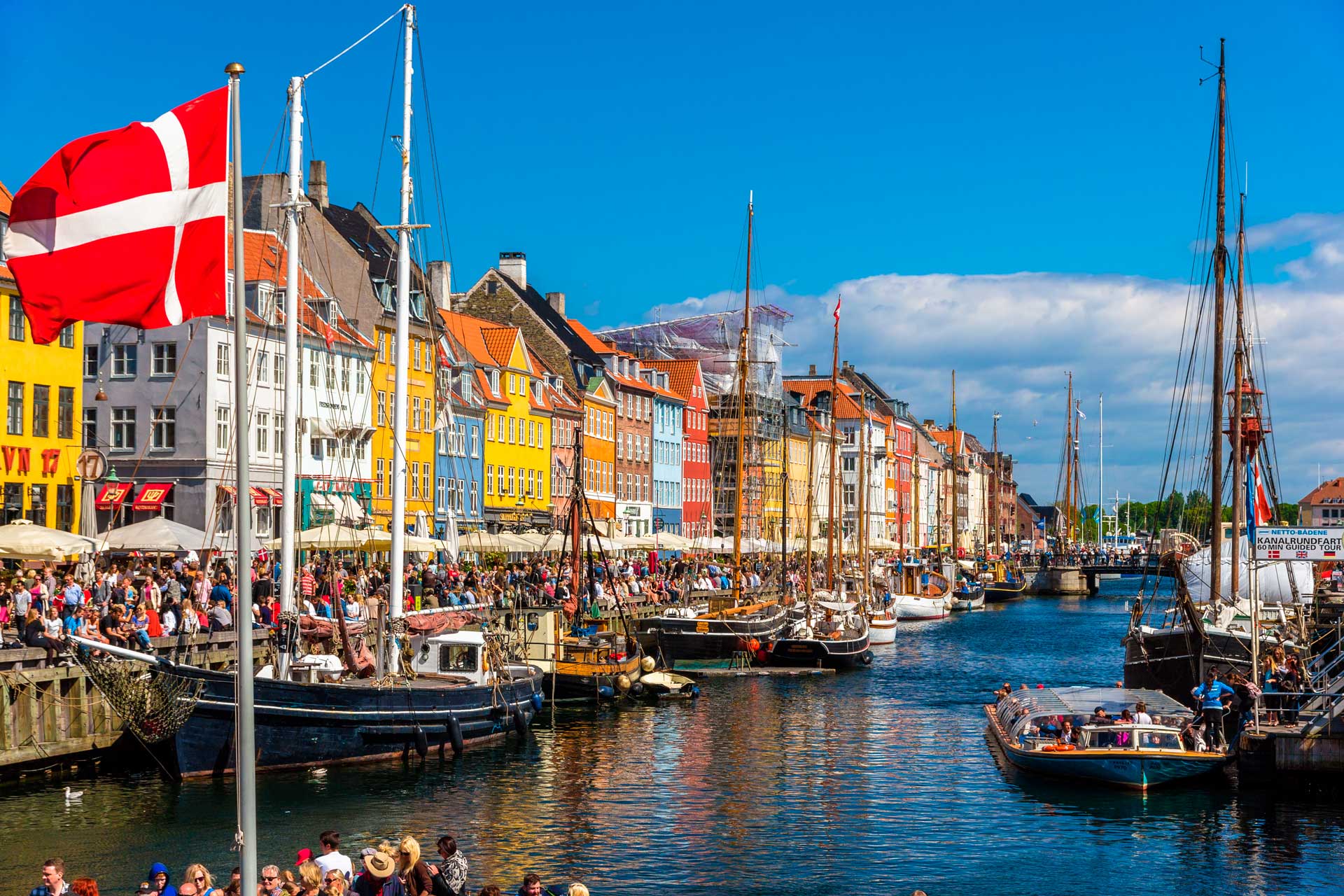
Ways to Obtain Danish Citizenship
There are several legal ways to acquire Danish citizenship, many of which overlap with the categories of applicants mentioned above. Let’s look at the main grounds on which one can obtain a Danish passport and the specifics of each path.
Citizenship by Birth (Right of Blood)
Being born to Danish parents automatically makes a child a citizen of Denmark. This is the primary principle of Danish nationality law — citizenship by descent (jus sanguinis). If at least one parent holds Danish citizenship at the time of the child’s birth, the child acquires it ipso facto. Here are the key legal details:
- Children born on or after July 1, 2014. Marital status of the parents is irrelevant — citizenship is passed from the Danish parent to the child whether or not the parents are married. Both the mother and father are treated equally (paternity must be legally established). Since 2013, Denmark also recognizes the co-mother system: if a child is born to two mothers and one of them is a Danish citizen, the child automatically acquires Danish citizenship at birth.
- Children born before 2014. Older cases fall under earlier versions of the nationality law. Previously, children born out of wedlock to Danish fathers did not always obtain citizenship automatically. Transitional provisions, such as the “princess rule”, allowed those born to Danish mothers between 1961 and 1978 (when citizenship could be passed only through the father) to apply for recognition. Today, most of these historical inconsistencies have been resolved, and descendants of Danes can generally obtain citizenship through a simplified naturalization process.
- Birth in Denmark to foreign parents. Being born in Denmark does not automatically grant citizenship (jus soli does not apply). The only exception concerns children who would otherwise be stateless. Under Denmark’s international obligations, the country must prevent statelessness. Therefore, a child born in Denmark to unknown parents (a foundling) or to parents unable to transmit any nationality is granted Danish citizenship by birth. In all other cases, children of foreigners may acquire citizenship later through naturalization, either on their own once they come of age or together with their parents if they naturalize earlier.
In general, Danish citizenship by birth is reserved for children of Danish citizens (or stateless children born on Danish soil). Everyone else must obtain citizenship through other legal pathways.
Naturalization (through long-term residence)
Naturalization is the most common way for foreigners to obtain Danish citizenship. It means a person has lived in the country for a long period, integrated into society, and met all the conditions required to acquire citizenship. This is the “standard” or general naturalization route and applies to all applicants who do not qualify for eased categories.
Main steps and requirements for naturalization in Denmark:
- Lawful entry and residence permit.
First, the applicant must enter the country legally. A tourist visa is not sufficient — you need a long-term D visa or an actual residence permit (e.g., for work, study, family reunification, etc.). Residence permits are issued at a Danish embassy or inside Denmark through the Immigration Service, for fixed periods (typically 1–4 years) and tied to the basis of stay. It is crucial to renew your permit on time and prove the basis still applies (for example, you continue to work or study). Violating permit conditions can lead to revocation and removal, ending any citizenship prospects. - Long-term residence and permanent residence (PR).
By law, the standard requirement is at least 9 years of residence in Denmark before acquiring citizenship under the ordinary procedure. This presumes continuous residence, allowing only short trips abroad (e.g., holidays). Some categories may qualify earlier (6–8 years for spouses, 8 years for refugees, etc. — see the section on facilitated naturalization). As a rule, before applying for citizenship, a foreign national must first obtain permanent residence (PR). In Denmark, PR is usually available after 8 years of residence, though in some cases 4–7 years may be possible if additional integration criteria are met. By law, at the time of being included in the citizenship bill (the naturalization act), the applicant must have held a permanent residence permit for at least 2 years. In practice, many follow the “8+2” route (10 years total). Even if you obtained PR faster on a special basis, you still need to complete 9 years of total residence (or the reduced period if you qualify for it). - Integration: language and civics.
A key requirement is Danish language proficiency. For naturalization, you must pass a recognized language exam at a certain level (generally B2 in the European framework, corresponding to Dansk 3). Proof can be a state language test or a certificate of study in Danish. In addition, you must pass the citizenship test covering Denmark’s history, culture, and civic order. It consists of 45 multiple-choice questions and is offered several times a year; preparation materials are available on the Ministry of Immigration and Integration website. Exemptions are granted only for serious health conditions, documented medically. Without language skills and basic civic knowledge, citizenship is not possible — integration is fundamental. - Good conduct.
Denmark carefully checks compliance with the law. A clean criminal record is required; a criminal conviction almost always leads to refusal. Administrative offenses also count, such as large fines. The law provides that those with fines totaling more than DKK 3,000 (about €400) are not admitted. You must also have no debts to the state — taxes, social benefits repayments, child support, etc. Any arrears must be settled before applying. Authorities also assess overall integration and financial self-sufficiency — for at least the previous few years, you must not have been on public assistance. Proof is required that you have not received social benefits for 2–5 years before applying. Employment or education history is also checked: typically 3½–4 years of work (or study) within the last 4–5 years. These measures ensure new citizens are responsible members of society. - Document collection and application file.
After meeting residence and integration requirements, assemble your dossier: the official application form, a valid passport, proof of PR, language certificate, citizenship-test certificate, and other documents. Submit copies (originals are shown in person if required). Foreign documents must be translated into Danish and apostilled/legalized — factor these costs in. If children apply with you, include the child’s documents (birth certificate, child’s residence-permit proof, and consent from the other parent if they are not naturalizing). - Submitting the application.
Nearly the entire process is online. You apply through the official portal (Ministry of Immigration and Integration), completing the digital form, uploading scans, and paying the fee online. The state fee is 4,000 DKK (about €535) for 2025. After payment, you book an identity appointment or submit fully electronically if you have a digital signature. Paper submission in person is rare and only if online access is impossible. It’s vital to file a complete dossier — incomplete submissions are a frequent reason for refusal. - Processing and decision.
After submission comes a long wait. Processing typically takes 17–22 months. You cannot check detailed status online — you await a letter from the ministry. The reason is that the decision on naturalization in Denmark is made by Parliament, which approves a list of new citizens via a special law twice a year, usually in April and October. Your case will be included in the next bill once all checks are cleared. If approved, you’ll receive an invitation to the citizenship ceremony. - Constitutional ceremony (oath).
The final step is attending the naturalization ceremony, held by your local municipality. The invitation specifies the time and place (ceremonies are typically organized every few months). Personal attendance is mandatory. At the ceremony, you sign a declaration of allegiance to the Danish Constitution and national values and exchange a handshake with an authorized official (e.g., the mayor). You then receive your certificate of citizenship. From that moment, you are officially a Danish citizen, with only the physical passport left to obtain.
As you can see, Denmark’s naturalization pathway is lengthy and demanding. However, for well-integrated immigrants who prepare carefully, it is entirely achievable — thousands succeed every year. The key is to understand the requirements early and plan diligently for each stage.
Find out details about applying for an EU passport at a free consultation
Fill out the simple form and an immigration lawyer will contact you shortly
Facilitated (Simplified) Naturalization
Danish law provides shorter residence periods for certain categories of applicants who are better integrated or have a special legal status. Simplified naturalization does not cancel the general requirements (language proficiency, clean record, financial independence, etc.) but allows eligible persons to apply for citizenship sooner. Here are the main preferential (fast-track) cases:
- Refugees and stateless persons.
Recognized refugees in Denmark and stateless persons may apply for citizenship after 8 years of residence (instead of 9). Refugee status must be officially confirmed by the Immigration Service. Stateless individuals (for instance, children born in Denmark who have no nationality) also benefit from reduced time requirements under international conventions on the reduction of statelessness. - Citizens of Nordic countries.
Nationals of Finland, Iceland, Norway, or Sweden enjoy special privileges. They may acquire Danish citizenship by declaration after 7 years of residence, provided they have no criminal record. Those who are Nordic citizens by birth (not naturalization) are even exempt from the permanent residence requirement. If a Nordic national obtained citizenship in their home country through naturalization, they can still apply after 2 years of continuous residence in Denmark. These are among the most favorable conditions, reflecting the cultural and historical closeness of the Nordic nations. - Spouses of Danish citizens.
As mentioned earlier, foreign spouses of Danes may apply for citizenship after 6–8 years of residence. The longer the marriage lasts, the shorter the required stay (a minimum of 6 years if the marriage has lasted 3 years or more). All other requirements — such as Danish language skills and employment — remain unchanged. The rule exists because living in a Danish family generally accelerates integration. - Children who arrived in Denmark at a young age.
Minor immigrants who grew up and were educated in Denmark are granted certain exemptions. A child who arrived in Denmark before age 15 may apply for citizenship immediately upon turning 18. They do not need to wait the full 9-year period, provided they have lived in Denmark for several years and successfully integrated (attended school, speak Danish, etc.). In practice, these youth naturalizations are usually approved through individual parliamentary acts. - Graduates of Danish educational institutions.
Foreigners who completed at least three years of higher or vocational education in Denmark and passed final exams can also obtain citizenship faster — after 5 years of residence, assuming they have not had long absences. This allows graduates who remain in Denmark to work to apply for a passport much sooner than under the standard 9-year rule.
It is important to note that facilitated naturalization is not automatic. The applicant must still satisfy all other statutory criteria — permanent residence, clean criminal record, passed exams, and so on. Failure to meet any condition will result in refusal, even for privileged categories. Therefore, applicants should prepare just as carefully as for standard naturalization, keeping in mind that eligibility simply occurs earlier. When in doubt, it is advisable to consult an immigration lawyer to confirm whether you qualify for accelerated citizenship and to correctly calculate your timeline.
Citizenship through Marriage
Marriage to a Danish citizen is not an independent basis for obtaining nationality but rather a special case of naturalization. However, it deserves a separate mention, as many questions arise specifically about acquiring Danish citizenship through marriage.
Here’s how the process works if you are married to a Danish citizen:
- Obtain a residence permit through family reunification. First, you must qualify for and obtain a residence permit based on family reunification. This requires meeting several conditions, such as both spouses being over 24 years old, having sufficient housing, stable income, and meeting other family immigration requirements. Once you move to Denmark, you live there on this residence permit, renewing it periodically.
- Apply for citizenship after 6–8 years of residence. After living in Denmark for 6 to 8 years, you may apply for citizenship (by that time, you’ll usually have permanent residence). The exact residence period depends on how long you’ve been married at the time of application: if you’ve been married for 3 years or more, 6 years of residence are enough; if the marriage is only 1 year old, 8 years are required. Intermediate durations apply proportionally (for example, 2 years of marriage → around 7 years of residence).
- Continuous cohabitation is required. The couple must live together throughout this period. Authorities may verify this by checking addresses and housing records. Adequate living space — at least 20 square meters per person — is mandatory. If it is found that the spouses live separately or the marriage is fictitious, the application will be rejected, and the foreign spouse may have their residence permit revoked.
- Fulfill all standard naturalization requirements. You must meet all general conditions for naturalization: Danish language proficiency, passing required tests, a clean criminal record, financial stability, and employment. There are no exemptions from these requirements for spouses — the only benefit is the reduced residence period.
- Final steps. Once your application is approved, you will attend the citizenship ceremony together with your Danish spouse, where you take the oath of allegiance. The Danish partner usually has no further obligations (except for providing written consent if a child is also naturalizing with the parent).
In summary, marriage simplifies and accelerates the path to Danish citizenship but does not eliminate the naturalization process itself. As long as the marriage is genuine and all legal requirements are met, you can become a full-fledged citizen of Denmark after several years of shared life.
Investment and Business Immigration
As mentioned earlier, it is impossible to buy Danish citizenship — Denmark does not have any economic citizenship or “citizenship-by-investment” programs. However, investment and entrepreneurship can serve as a legitimate pathway to immigration, which in time may lead to naturalization.
The main routes for investors and entrepreneurs include:
- Startup Denmark. Denmark actively attracts foreign entrepreneurs through its Startup Denmark visa program. If your business idea is approved by a special government panel, you receive a 2-year residence permit to establish your company. This permit can be extended for another 3 years if the business is progressing successfully. After 5 years of residence under this scheme, you may apply for permanent residence (PR), and after 9 years in total — for citizenship under general naturalization rules.
- Business through major investments. While Denmark offers no “citizenship-for-investment” or “golden visa” scheme, wealthy individuals can obtain a residence permit as investors — for example, by investing in a Danish company or approved fund. Typically, this falls under entrepreneurial residence, where you register a business or become a co-founder of a local company and gain residency as its managing director. The next steps are standard: renew your permit, apply for PR after several years, and eventually for citizenship once you meet the residency requirements.
- Employment in your own company. Some foreigners open a company in Denmark and then hire themselves as managing directors, applying for a work visa. This is effectively a form of employment-based immigration, except your own company is the employer. After 4 years of continuous work in Denmark, you may qualify for PR (if additional integration criteria are met), and after 8–9 years, for citizenship through the regular procedure.
In all cases, investments only indirectly lead to citizenship, through the stage of long-term residence. There is no legal way to “buy” a Danish passport. Any advertisements promising “Danish citizenship for money” are scams. The only thing truly worth paying for is qualified legal assistance — to ensure your immigration and business setup are done properly 😉. Details on the cost of obtaining Danish citizenship follow in the next section.
Special Merits and Exceptions
This pathway does not have a formalized procedure but is worth mentioning. The Danish Parliament has the authority to grant citizenship by individual act, outside of standard rules, based on humanitarian reasons or considerations of national interest. Such cases are extremely rare and occur only in exceptional circumstances.
Typically, these situations include:
- Outstanding athletes or cultural figures. For example, a talented athlete wishing to represent Denmark at major international competitions may receive expedited citizenship if the regular naturalization process would take too long. However, even in such cases, the person must meet the basic conditions — residence in Denmark, good conduct, and compliance with the law.
- Individuals with special contributions to the Kingdom. In theory, a foreign scientist who achieves a breakthrough at a Danish university or a businessperson who invests heavily and creates thousands of jobs could be granted citizenship as a sign of appreciation. In practice, however, such individuals are usually assisted in obtaining permanent residence and favorable conditions for living and working, while citizenship is still acquired through the regular procedure.
- Humanitarian cases. Occasionally, citizenship may be granted for compassionate reasons — for example, to a stateless child raised in Denmark who does not fit any standard category, or to an elderly person for whom language requirements are relaxed due to health or age.
To reiterate, such exceptions are extremely uncommon. Denmark’s citizenship system prioritizes transparency, equality, and adherence to established rules, so nearly all applicants must go through the standard naturalization process. Counting on a “special path” is unrealistic — it is far wiser to focus on meeting the official requirements.
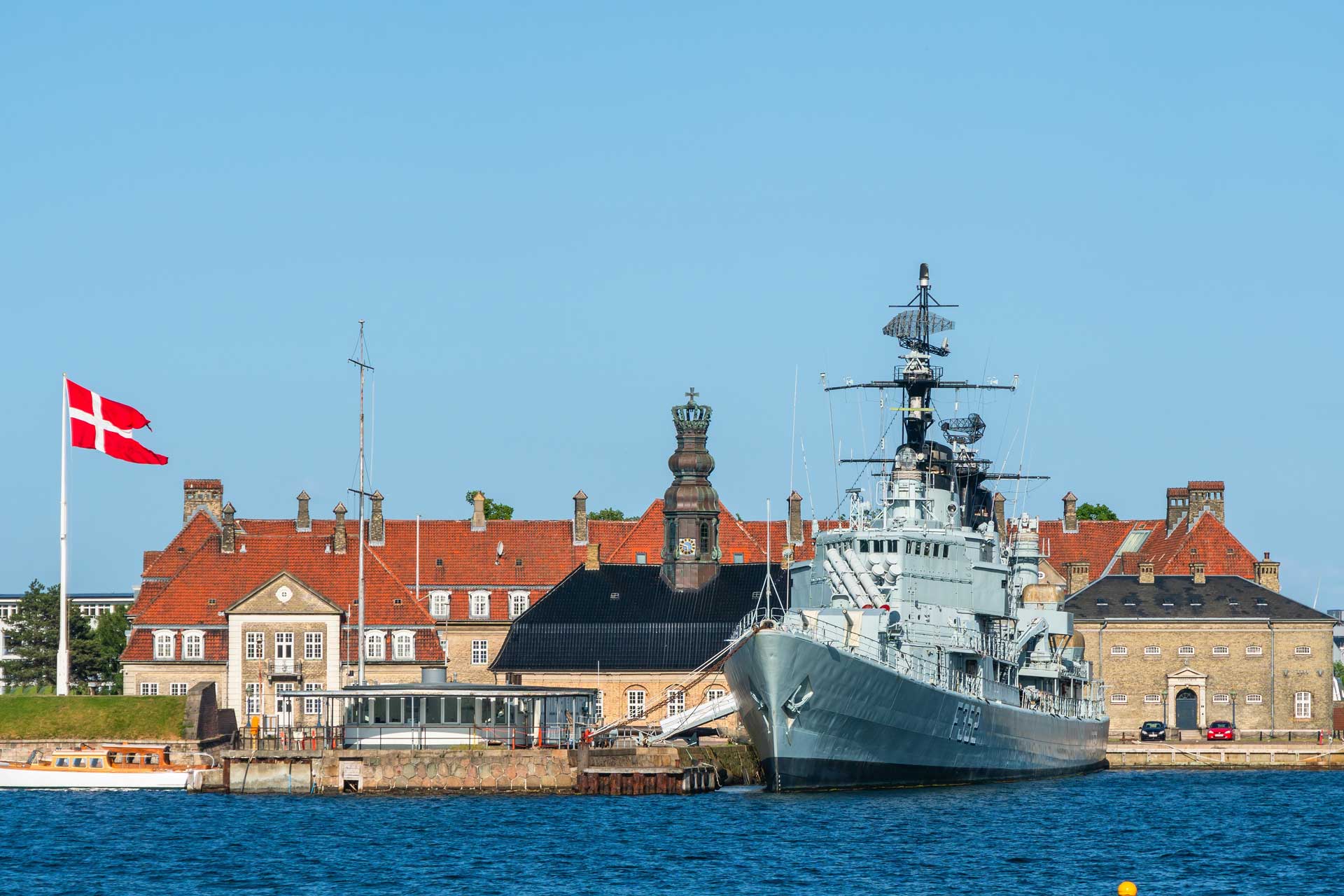
Procedure for Obtaining Danish Citizenship
Now that we’ve reviewed who can qualify and on what grounds, let’s outline the step-by-step process an applicant goes through. Many of these stages were discussed in the section on naturalization, but here they are structured from start to finish:
- Check your eligibility.
First, confirm that you meet the legal requirements. Review your situation: have you lived in Denmark long enough? Do you already hold permanent residence (PR)? Have you passed the necessary exams? Do you have any outstanding debts? This self-assessment will help determine whether you’re ready to apply or still need to fulfill some conditions. - Gather documents.
Prepare your application file. It typically includes: a completed citizenship application form, passport, PR card, proof of Danish language proficiency (e.g., Danskprøve 3 or equivalent), certificate of passing the Statsborgerskabsprøven (citizenship test), and certificates showing no criminal record or tax arrears (these are often verified automatically, but a self-declaration may be required). All foreign documents must be translated into Danish and legalized or apostilled. If children are applying with you, include their birth certificates, proof of residence in Denmark, and consent from the other parent if applicable. - Submit your application.
Register on the official citizenship portal (Statsborgerskab) and submit your application electronically. You’ll need a Danish digital ID (NemID or MitID). In the online form, fill in your personal data, upload scanned documents, and pay the fee of 4,000 DKK. If required, book an appointment to present originals in person at the Ministry of Immigration. Usually, online submission is sufficient; personal attendance is only needed for identity verification if officials request it. - Wait for processing.
Be patient — processing typically takes 1.5 to 2 years. During this period, you might be asked for updated information or documents if older ones expire. Naturalization decisions are issued twice a year, when Parliament passes a law listing new citizens — usually in spring and autumn. Even if your review is complete, you’ll wait for the next legislative session. Repeatedly contacting officials won’t speed up the process. - Receive the decision.
You’ll receive a letter (by email or regular mail) notifying you of approval and inviting you to attend the citizenship ceremony. In the unlikely event of refusal, the letter will explain the reason — such as failing to meet a requirement or providing inaccurate information. You can reapply after fixing the issue or appeal the decision if you disagree. - Attend the citizenship ceremony.
Go to the constitutional ceremony in your municipality on the assigned date, bringing ID and the invitation letter. At the ceremony, you’ll sign a declaration of allegiance to the Danish Constitution, pledge to respect Danish laws and democratic values, and symbolically shake hands with an official representative. You will then receive your certificate of citizenship — congratulations, you are now officially a citizen of the Kingdom of Denmark! - Obtain your passport and national ID.
After the ceremony, you can apply for a Danish passport and national ID card at your local municipal office (kommune). The ID card is typically issued within a few days and costs about 150 DKK. The biometric Danish passport (the standard burgundy EU type) costs around 891 DKK (~€120) and is valid for 10 years. Production usually takes about two weeks.
By following these steps, you’ll complete the full journey from resident to citizen. The process is lengthy and requires preparation, but the result — becoming a full-fledged Danish citizen — is well worth the effort. In the next section, we’ll review the requirements and criteria every applicant must meet to ensure nothing is overlooked.
Requirements for Obtaining Citizenship
When naturalizing, Denmark sets clear requirements for applicants. They fall into several groups: residence period, legal status, integration, and good character. Here they are in order:
- Required period of residence. The core criterion is living in Denmark for a specified number of years on a legal basis. The standard is 9 years of continuous residence before applying. Shorter periods apply to privileged categories (as discussed: 8 years for refugees, 6–8 for spouses, 2 years for certain Nordic citizens, etc.). Residence must be continuous — long absences can reset the clock. Short trips (e.g., a couple of weeks’ vacation) are fine, but a year abroad for work or study will likely not count. At the time of application, you must also have held permanent residence for at least 2 years.
- Lawful status (temporary/permanent residence). You must have been in the country legally throughout the qualifying years. Nine years without status cannot lead to naturalization. By the time you apply, you must hold a permanent residence permit (Permanent opholdstilladelse) confirming your right to live in Denmark indefinitely. The only common exception concerns some Nordic citizens applying by declaration. Everyone else must obtain PR in advance (typically 1–2 years before applying for citizenship).
- Danish language proficiency. You must prove sufficient Danish for integration. Typically the required level is B2 (in limited cases for elderly applicants, B1 may suffice). Most candidates pass Prøve i Dansk 3; Prøve i Dansk 2 may be accepted only with additional authorization. The law lists alternative ways to satisfy the requirement — e.g., completing Danish schooling above certain grades, or graduating from a Danish university. In most cases, foreigners take subsidized language courses and pass an official test.
- Knowledge of society and history. Beyond language, you must pass the citizenship test (Statsborgerskabsprøven / Indfødsretsprøven i Danmark): 45 questions on culture, history, political system, traditions, and values. The passing score is at least 36 correct answers out of 45. The test is administered twice a year nationwide, with official study materials published (“Denmark and the Danes” booklet covering geography, key dates, holidays, Parliament, the royal family, etc.). Exemptions are possible only for serious chronic illness or disability, documented by a medical certificate and assessed individually.
- No criminal record or violations. A spotless legal reputation is required. Convictions postpone eligibility for many years, and very serious crimes can bar citizenship permanently. Even lesser offenses (e.g., DUI fines, suspended sentences) trigger a “quarantine period” during which you cannot apply — typically 3–6 years, depending on the amount and nature of the offense, as detailed in the nationality law guidance. You must also have no unpaid fines at submission. Debts to public authorities (tax arrears, improperly received benefits, child support) are checked; all debts must be settled.
- Financial self-sufficiency. You must show you can support yourself. In practice, this means no social assistance (kontanthjælp) for at least the last 2 years — preferably 4–5 years — before applying. If you recently relied on social welfare, you’ll need to wait. Unemployment insurance benefits (A-kasse) generally do not count as social assistance if you pay into the scheme yourself. Having stable employment at the time of application is strongly advisable. Formally, the law expects at least 3 years and 6 months of work (or education) in the past 4–5 years. Entrepreneurs should provide company financials demonstrating activity and income.
- Loyalty and oath. You must affirm loyalty to the Danish state. When applying, you sign a declaration of adherence to Danish laws and principles (included in the application form). At the ceremony, you confirm this again by taking an oath to the Constitution. If you commit an offense after applying and before approval (e.g., incur a major fine), processing can be paused or reconsidered. Comply with the law at all times, especially during the waiting period.
- Renunciation of previous citizenship (no longer required). Until 2015, Denmark required new citizens to renounce their prior nationality. This rule is now abolished. Since 1 September 2015, Danish law allows dual citizenship. You do not need to give up your original passport when naturalizing in Denmark, provided your home country also permits dual nationality. We discuss dual citizenship in more detail below.
These requirements may seem strict, but they are transparent. If you prepare in advance — learn Danish from day one, obey the law, work, and integrate — meeting them in a few years is realistic. Many immigrants report that steady preparation is the key to success. Those who cut corners (skip language study, hide offenses, or try to mislead authorities) face refusals.
❗Remember: illegal stay or fraud not only blocks citizenship but can lead to deportation and long entry bans. Stay within the law and double-check everything carefully.
Check your chances of getting an EU passport through a simplified procedure
Sign up for a free consultation to learn more from the experts at Mycitizenagency as soon as possible
Timeframes and Costs
Obtaining Danish citizenship is a fairly lengthy process. The timeline consists of several stages:
- Minimum residence period. As noted, in the general case you must live in Denmark for at least 9 years before applying. Fast-track categories can save a couple of years (as little as 2 years for certain Nordic citizens by declaration, 6 years for some spouses, and 5 years for university graduates). On average, immigrants spend about 8–10 years in Denmark before becoming citizens.
- Application processing time. After submission, the wait is roughly 1.5–2 years. Officially it ranges from 17 to 22 months, and in practice often closer to two years. This is due to limited throughput in the naturalization system: Parliament approves citizenship in batches twice a year. For example, even if your checks finish within a year, you may still have to wait for the next bill. Plan for this lag: from submission to passport issuance can be up to 2 years, and there’s little you can do to speed it up.
- Total time until passport. If you add it up — years to reach eligibility + up to 2 years of processing + a couple of months for the ceremony and passport issuance — the overall path is over 10 years. Some complete it faster (fast-track cases or those who arrived young and applied early), but realistically plan for about a decade from arrival to passport.
Now for the financial side — what you’ll need to pay:
- Government fee. When applying for citizenship, a fee of DKK 4,000 (about €535) is charged. This is periodically indexed, so check the ministry website for the current amount (as of 2025 it’s ~DKK 4,000). The fee is paid online and non-refundable, even if you are later refused.
- Language exam and citizenship test. If you take the exams, they are paid as well. The Danish language exam typically costs DKK 1,300–2,000 (varies by level and test center). The citizenship test (Indfødsretsprøven) costs about DKK 800 per attempt. You may also pay for prep courses (many self-study). Each retake also costs money, so it’s best to prepare thoroughly.
- Translations and notarization. Documents not in Danish/English must be translated by a sworn translator. Costs vary by volume; translating a single certificate typically costs DKK 300–500. Apostille/legalization in your home country may also carry fees. These expenses are individual.
- Health insurance. There is no direct “citizenship fee” for healthcare, but while you’re on the path, you must maintain valid health coverage (as a resident, healthcare is free in Denmark; at the D-visa stage you may need private insurance for the first months).
- Legal assistance (optional). Many applicants manage on their own because the procedure is standardized. If your case is complex or you prefer help, you can hire an immigration lawyer/consultant. A one-off consultation is roughly €150–300; full representation can start from €1,000 and up, depending on the firm. Not mandatory, but worth budgeting if you plan to use professionals.
- Other minor expenses. Passport photos (DKK 200–300), travel to the ceremony, maybe a new outfit for the oath 😉, etc. Small compared to other costs, but they exist.
Estimated total out-of-pocket for the process: government fee DKK 4,000 + exams (~DKK 2,000) + translations (~DKK 2,000) = ~DKK 8,000–10,000 (about €1,070–€1,340). Add legal fees if you hire a lawyer. Naturally, this does not include your cost of living over the 9–10 years (rent, food, etc.) — those are living expenses, not citizenship costs.
⚠️Note: If your application is refused, a new application means starting over, including paying the fee again. It’s more cost-effective to prepare well and do everything right the first time.
Can You Have Dual Citizenship in Denmark?
The question of dual citizenship is important for many immigrants who do not want to lose their original nationality when acquiring a new one. The good news is that Denmark allows dual (and even multiple) citizenships. Since September 1, 2015, a law has been in effect that permits Danish citizens to hold the citizenship of other countries. Foreigners who naturalize in Denmark are no longer required to renounce their previous citizenship — meaning you can obtain Danish citizenship while keeping your original passport.
However, there is one key condition: your home country must also allow multiple citizenships. Denmark has no objection, but some countries (such as China, India, or Saudi Arabia) automatically revoke citizenship if their nationals acquire another one. Many post-Soviet countries, including Russia, Ukraine, and Kazakhstan, permit dual citizenship but impose certain notification or procedural requirements. For instance, Russia recognizes its citizens only as Russian within its borders and requires notification to the Ministry of Internal Affairs within 60 days of acquiring another nationality. Ukraine formally does not recognize dual citizenship, and in theory, one could lose Ukrainian citizenship after obtaining a foreign one — although in practice, this is rarely enforced. Therefore, you should check your home country’s policy before applying to avoid unpleasant surprises.
What dual citizenship offers in practice? You can use both passports freely — for example, entering your country of origin with its passport, and traveling across Europe with your Danish one. This greatly expands your travel options: some countries are visa-free with one passport but not the other. Dual citizens enjoy rights in both countries (social protection, healthcare, property rights, etc.), but they also have obligations in each (such as taxes or military service, depending on national laws). Remember: each country considers you solely its own citizen within its borders, and there is generally no automatic exchange of information about your citizenships between governments unless specific agreements exist.
Currently, Denmark imposes no limits on holding additional citizenships. You can even hold three or more passports — for example, Danish, Russian, and later American — if all involved countries allow it. Denmark has no bilateral dual citizenship treaties (and doesn’t need them now that multiple citizenships are permitted by default).
⚠️In summary: Danish citizenship can safely become your second nationality. If you value your original passport, you can keep it. The only exception is if your home country requires renunciation upon acquiring a new citizenship — in that case, you’ll have to decide which matters more. For most immigrants, however, that’s no longer a problem: today, you can be both Danish and a citizen of your homeland.
Danish citizenship offers tremendous benefits — from freedom of movement and residence anywhere in the EU to access to social support and one of the highest living standards in the world. The Danish passport is among the most respected globally, ensuring stability and security for you and your family.
‼️Common mistakes to avoid: submitting incomplete documents, concealing or falsifying information (which leads to refusal or even residence issues), underestimating the difficulty of the language exam, or breaking residency continuity through long absences.
❕Final advice: honestly assess your readiness and, if uncertain, consult an immigration lawyer. A professional can review your case, confirm eligibility, and help prepare documentation — especially valuable for complex situations (e.g., past convictions, gaps in residence, or complicated family matters).
Gaining citizenship is a demanding bureaucratic process — but the reward is immense. As a Danish citizen, you and your family gain new opportunities, rights, and confidence in the future.
Frequently Asked Questions about Danish Citizenship
We have compiled answers to the most common questions about obtaining Danish citizenship. If you did not find the information you were looking for or want to learn more about the requirements, timelines, and benefits of Danish passport, contact us for a free consultation.
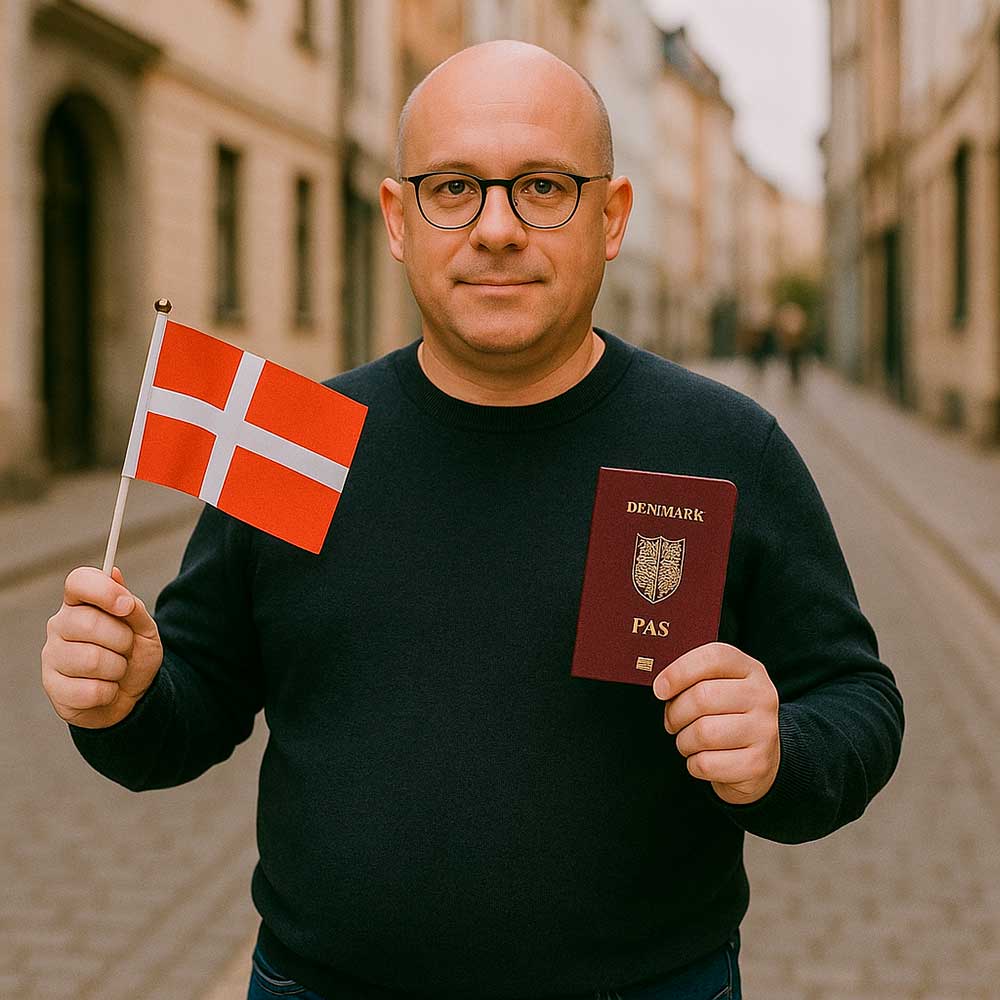
Almost the entire process is handled online. Applications are submitted through the official website of the Danish Ministry of Immigration and Integration, where you fill out an electronic form, upload document copies, and pay the fee by card. You’ll only need to appear in person for the final citizenship ceremony and possibly once to show original documents (if you don’t have a digital signature). In most cases, there’s no need to visit multiple offices — Denmark’s system is highly digitalized.
Yes, both are mandatory. Knowledge of the Danish language and society is required for naturalization. You must demonstrate Danish proficiency at at least the B2 level (for most applicants), proven by passing an official exam (such as Dansk 3). You must also pass the citizenship test — a 45-question quiz on Denmark’s culture, history, and politics. Exemptions apply only for medical reasons (if you’re physically unable to study or take exams). Prepare in advance: take language courses and review the official citizenship test guide. Without passing these exams, citizenship will not be granted.
Document requirements are strictly regulated. If you lack any mandatory document (e.g., lost passport or no criminal record certificate), you must obtain replacements before applying. Submit a complete file, or your application will likely be rejected. Contact the relevant authorities in advance: your country’s embassy for certificates, the police for lost passport confirmation, etc. Don’t submit an incomplete dossier — the system won’t hold your place while you gather missing items. If obtaining certain documents is difficult (for example, due to bureaucracy in your home country), consult an immigration lawyer for advice. The rule is simple: you must provide everything listed in the document checklist.
No, you are not required to live in Denmark permanently. Unlike residence permits, citizenship is for life, with no minimum-stay requirement. You can move abroad immediately after receiving your passport — it remains valid. Denmark does not revoke citizenship for living abroad.
The Danish passport ranks among the top three in the world for visa-free access. Danish citizens can visit over 170 countries without a visa. This includes all EU countries (freedom of movement) as well as the UK, Canada, Australia, Japan, and many others — often you only need to buy a ticket. For some destinations, like the USA, Danes only need to apply for electronic authorization (ESTA), not a visa. As of 2025, the Danish passport grants visa-free or visa-on-arrival access to about 174 countries, making it one of the most powerful and convenient passports globally for both travelers and businesspeople. Visa policies may change slightly over time, but Denmark consistently remains among the top-ranking passports in the world.
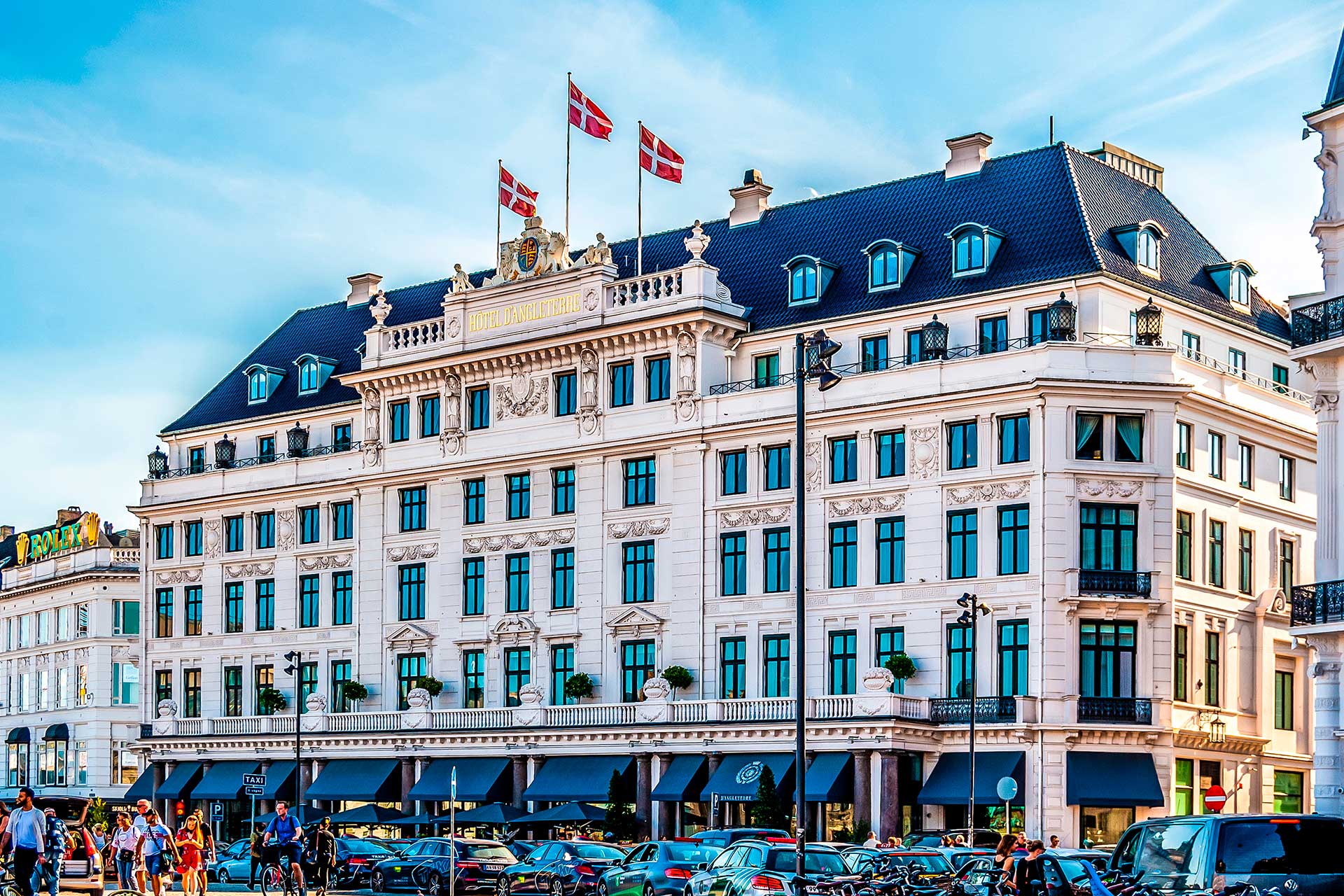

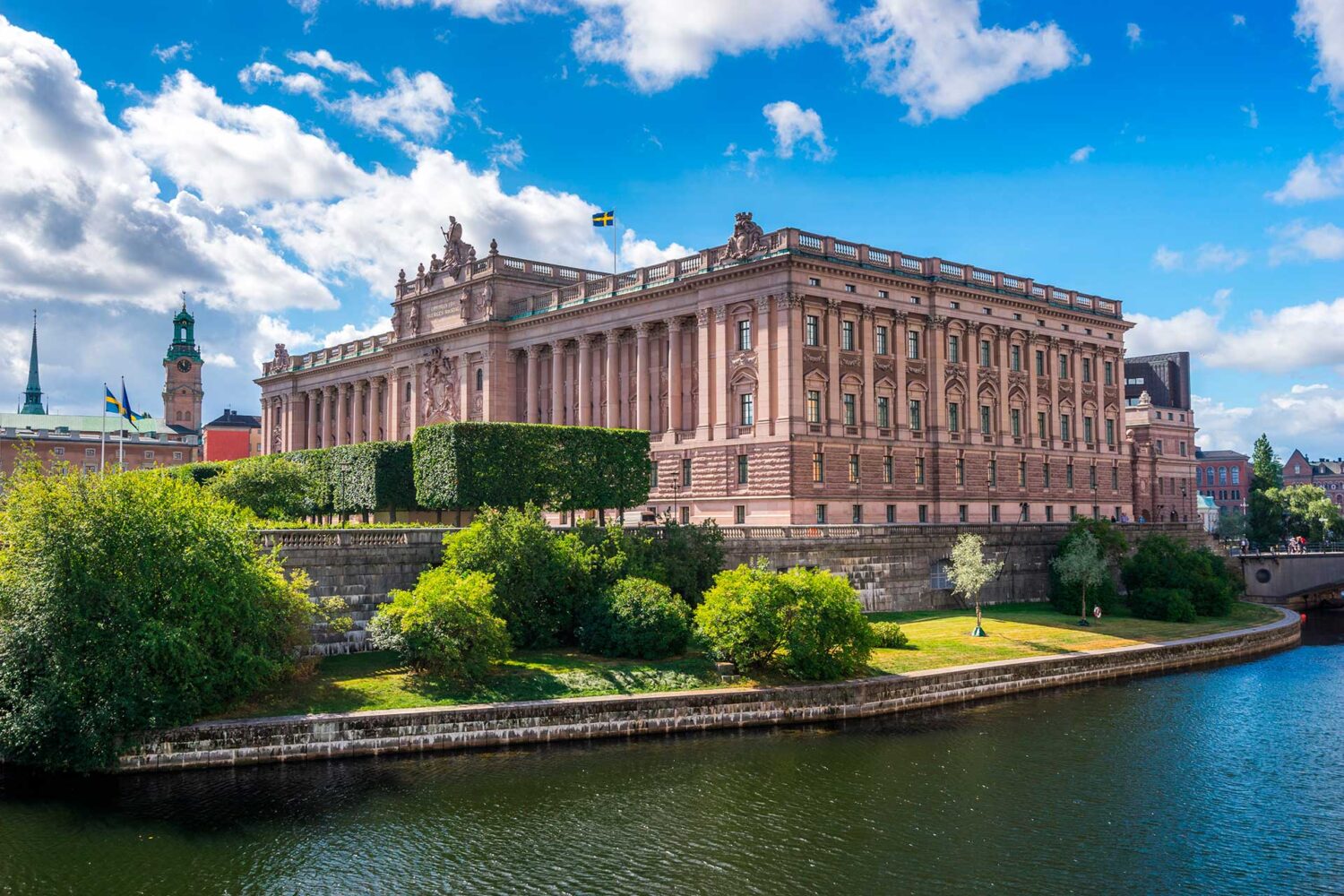
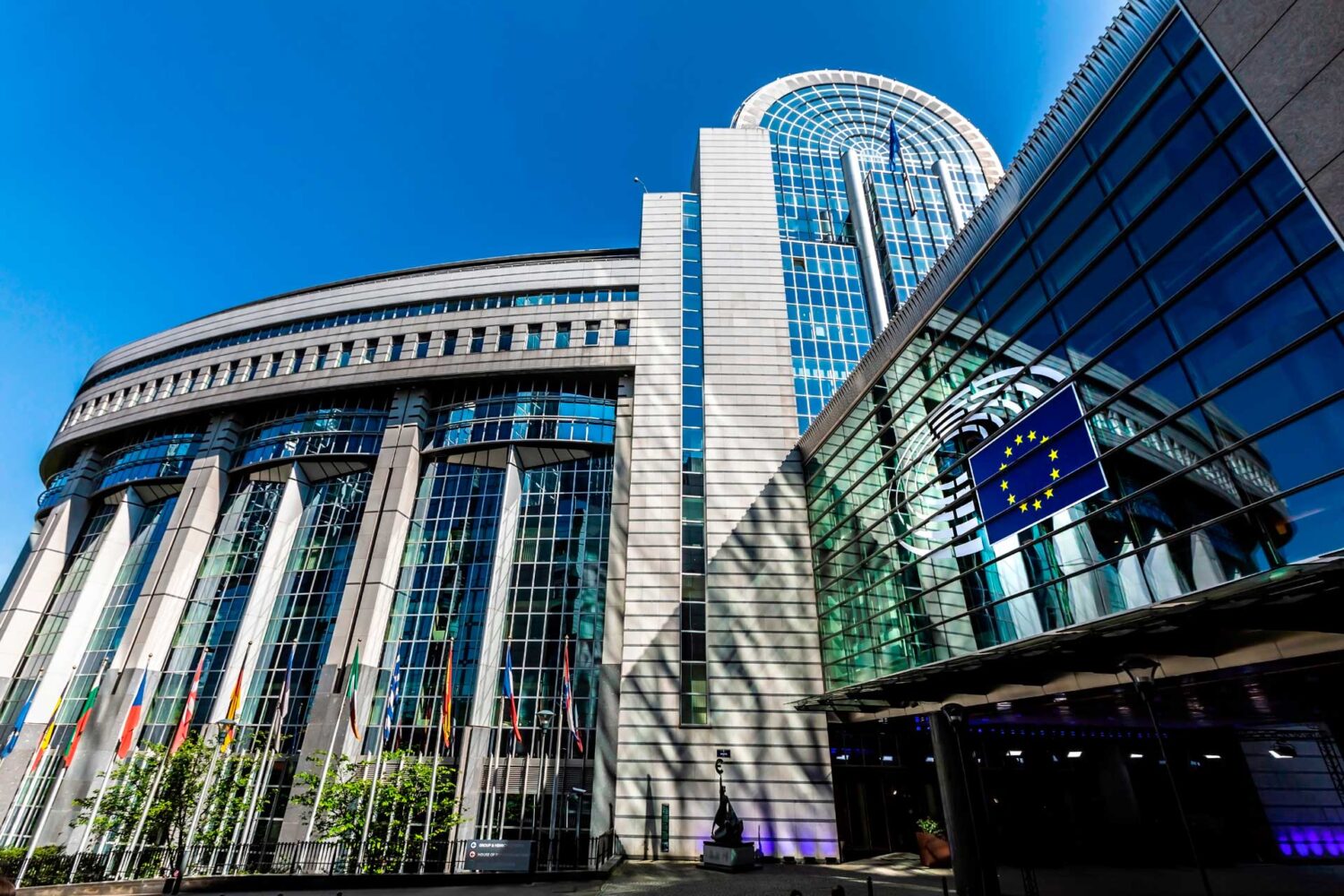

Leave a Reply